Supporting language teaching in hybrid, face-to-face and distance learning systems: from tutoring to teaching?
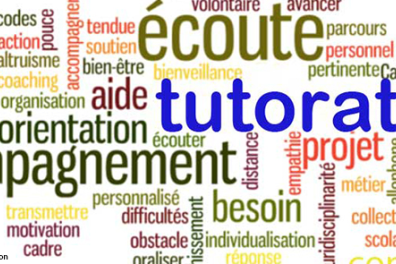
All these "virtual" or "real" meeting places for learners, peers, mentors, tutors or teachers, in which technologies are used to support language teaching, bring into play resources and exchanges according to a mode of regulation that is both specific to each context and to the uses of digital technology. For the language didactics field, language teaching supported by digital uses offers magnificent opportunities for reflection on work and appropriation, whether for learners, future teachers, tutors or teachers.
Teacher, tutor, mentor, peer and learner: a terminological question revealing the challenges of digital for language teaching
It's difficult to address the challenges posed by digital without considering the shifts in meaning concerning the role of the teacher as facilitator of learning. This evolution seems to go hand in hand with changes in the way technologies are used. Teaching or tutoring, how are these roles defined or articulated?
In the formal, face-to-face university context, tutoring is sometimes seen as the academic and moral accompaniment of a student in difficulty. The tutor's role is one of advice and follow-up. It should be noted, however, that the term "teacher" is used in some definitions of tutor, who is then considered to be a teacher who monitors a student. Tutoring therefore appears to be a way of meeting the need for individualized training, by providing precise answers within the framework of tailor-made teaching. Support, or rather the lack of it, remains the watchword that widens the gap between tutoring and teaching. Yet, as this tutor points out, these roles are far from being so distinct:
"The tutor has the roles of "accompanier, facilitator, instructor, evaluator" (Denis, 2003: 21), which are also qualities required when one is a language teacher.
I don't know exactly what "a tutor" is: correcting them, giving them tips or doing anything else."

In distance learning, there are several forms of tutoring depending on whether the support modalities are in the form of written, oral or video communication. At a distance, the tutor's role is one of advice and follow-up, to help learners remain committed throughout their training. Indeed, the difficulties that learners may experience in maintaining their motivation during distance learning are not a new phenomenon, and the problem of a lack of presence at a distance was often highlighted during the transition to distance learning during the health crisis. In the absence of a tutor, it's up to the teacher to fill the gap. It should also be noted that one of the specific features of distance tutoring is that there is a temporal (and spatial) dissociation between the tutor and the learner, a role that is not always easy to grasp:
"I imagined my future role as that of a teacher who would be available to answer students' questions, guide them through the intricacies of Moodle, correct their productions, offer them links to digital tools.... In fact, this is what a classroom teacher would have done. However, after taking charge, I would compare my role more to that of a facilitator, qualified in his or her field of taking charge."
In distance learning, it's the interactive media that will really structure and evolve the tutor's role with learners, making it more precise and permanent, as this other feedback from a tutor in a distance device indicates:
"My tutoring activity consisted first of all in orienting participants as to how the platform worked (how it works, different online tools to use...) and then in answering their questions on the thread of the discussion, around the week's challenge, the tasks to be completed, the deadlines to be met, the assessment methods... But also in regulating conversations between participants, and providing elements of correction to both written and oral productions, which they posted on the platform." Answering questions supports the learning activities in the teaching scenario:
Figure 1: exchange between tutor and learner within a MOOC
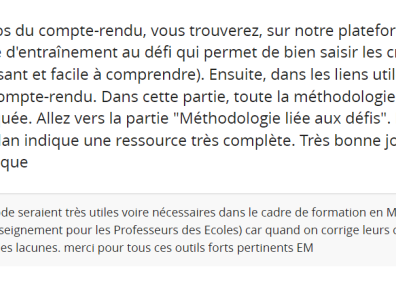
What's the difference between tutor and mentor? We can start by drawing a distinction between mentor and learner. What distinguishes the mentor from the learner is the degree of expertise, the mentor would then be seen more as an expert and the learner as a novice. This relationship between novice and expert is a reminder that complex learning necessarily takes place in collaboration with others, even when the tutor compares his or her role to that of "a facilitator, qualified in the field in which he or she is taking on the role".
Whether we refer to coaching as tutoring or mentoring, the aim seems to be the same: to help a learner solve problems and facilitate learning. So it's more from a relational point of view that the distinction becomes clearer, with the mentor retaining the position of expert coach, while a tutor retains the role of learning facilitator. If it seems so complex to differentiate between tutor and mentor, it's undoubtedly because this role varies according to contexts, course situations, institutional needs and those revealed by the systems themselves, and finally according to the pedagogical conception on which the latter are based.
More broadly speaking, in the field of language teaching, certain practices are the responsibility of tutors considered to be more competent and who will lead conversation sessions or workshops. This practice involves the language expert tutor, a sort of mentor who ultimately promotes the language enrichment of the learner he or she supports.
The diversity of tutor interventions will therefore vary according to the learning implemented, depending on whether these interventions are resolutely open, expert, collaboratively orchestrated or initially structured by the course designer. The hierarchical system in which tutoring is implemented also plays an important role in tutoring support. At the institutional level, learning is of a formal type, and teaching may consequently impose a more or less rigid structure that establishes a highly hierarchical pedagogical relationship between the administration, the teacher, the teacher-designer, the tutor and the learners.
Tutor, mentor, peer?
Depending on the pedagogical approach adopted, the collaborative and open dimension of the learning context is therefore the one that will actually determine the roles of tutor, mentor or peer and indeed the very nature of interventions and exchanges. In the following exchange, a participant reminds his peers of the instructions previously suggested by the tutor for responding to a task:
Figure 2: tutor intervention in asynchronous exchanges within a MOOC
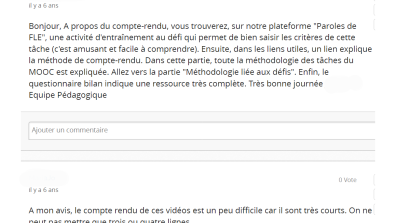
It is therefore the very nature of the exchanges that also in some way guides the way in which the interventions of the tutor, mentor, peers and learners are organized, directing their attention towards the problems posed by the teaching content:
Figure 3: mentor's role in exchanges within a MOOC
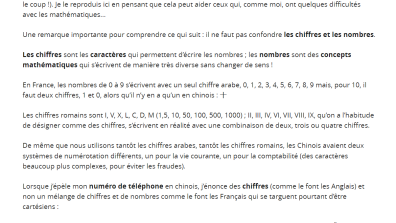
Redirecting attention here provides the opportunity to move into collaboration with the help of the tutor, mentor or peer at a higher level of learning. For peers or learners, this collaboration is the means of identifying what they know how to do and don't know how to do. Learners' cascading responses indicate in this asynchronous exchange that the posted message meets the needs of some of them:
Figure 4: learners' cascading responses within a MOOC
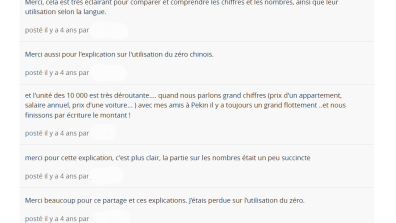
In the very nature of these exchanges, we can distinguish the crucial importance attached to pointing out to others some of the defining features of the enumeration system in the Chinese language. This dialogue helps to maintain learning focus and control learner frustration. In this way, in a learning situation, the activity is "internalized" and reorganized at the same time. Coaching and, more broadly, social language in context thus take the form of a dialogue that is shared between all the players, language for oneself and then inner language, erasing, as it were, a vertical allocation of teaching tasks and responsibilities. But what seems most important to emphasize here is the vital role that both teaching in mediation and tutorial interaction play in problem-solving. Ultimately, whether we designate the teacher, tutor, mentor or peer as the provider of help through discourse or communication, what matters above all is the support system that will enable learners to solve problems they cannot accomplish on their own.
The tasks and responsibilities of the teacher, tutor, mentor or peers may therefore consist equally in facilitating learning and guiding it along the right path.
Understanding the meaning of interventions: accompanying, simplifying, reducing the number of actions required to identify solutions
On the one hand, understanding the meaning of interventions and its effects therefore seems to be the most decisive element in addressing the challenges of digital for language teaching-learning. On the other hand, as tutors' assessments indicate, putting into practice interventions within different types of devices with the aim of better understanding how support is structured is truly essential for the training of future teachers:
S. Following a Mooc as a tutor represents a teaching experience for me in the sense that I've learned that you can very well "teach", guide and orient learners using online tools, and that interaction, admittedly essential to the teaching-learning process, can take place even in a virtual setting; all it takes is enough passion, commitment and curiosity to devote time and effort to exploring a subject or acquiring a skill.
R. It's complicated to establish a genuine student/tutor pedagogical relationship. Indeed, it sometimes seems impossible to motivate students, who for the most part remain relatively unresponsive to the messages sent.
D. The search for a certain proximity/distance balance in our relationship as tutors to learners is not obvious.
L. It seemed to us that our role would be to guide, orient and answer the student's questions, all with a benevolent eye.
To sum up, from a training perspective, whether you're a tutor, mentor, peer or teacher, any experience of accompaniment is a formative work that contributes to developing one's own questioning about one's activity, reflecting on one's practices, building knowledge about pedagogical content and the different roles and functions of the teacher of a so-called foreign language in the classroom. Whatever the role, this approach to learning is based on participation in activities within a community of practice. This is an essential way for the field of future teacher training to apprehend the teaching and learning of so-called foreign languages today through processes of participation, of varied but active engagement, of negotiation of meaning between different actors - teachers, peers, tutors, mentors, learners, etc. - and more broadly within interactions between different actors.
Catherine BRUMELOT, FLE teacher & Language Didactics - Inal'FLE Manager, Inalco. Attached to the Plidam team.
and
Christelle HOPPE, associate of PLIDAM & lecturer in the DDL stream, Inalco - FLE teacher at the University of Nantes.
References
Armao Meliet, E. (2017). "L'évolution des métiers de l'ingénierie pédagogique: quelle adéquation entre les nouveaux besoins et les formations proposées?", Distances et médiations des savoirs [Online], 18 | June 2017, online June 19, 2017, accessed February 29, 2020.
URL: http://journals.openedition.org/dms/1881
DOI: https://doi.org/10.4000/dms.1881
Demaizière, F. and Grosbois, M. (2014) "Numérique et enseignement-apprentissage des langues en Lansad - Quand, comment, pourquoi?", Alsic [Online], Vol. 17 | 2014.
Dussarps, C. (2014). Abandons et écarts entre l'offre de formation, les attentes et le vécu des étudiants dans les dispositifs de FOAD. hal-01271510
Grosbois, M. (2015). S approprier le numérique: réussite ou échec? Pour qui, pourquoi, comment?", Recherche et pratiques pédagogiques en langues de spécialité [Online], Vol. XXXIV N° 2 | 2015, online June 29, 2015, accessed November 22, 2019. URL : http://journals.openedition.org/apliut/5168 . DOI : 10.4000/apliut.5168
Mangenot, F. (2014). Online training and Mooc: learning and training in language with digital. Hachette FLE. Coll. F.
Nissen, E. (2011). Analyzing tutor roles in hybrid training: distinguishing distance and face-to-face verbal interactions, Ellug, 147-166.
Nissen, E. (2019). Hybrid language training. Articuler présentiel et distanciel. Paris : Didier.
Rivens Mompean, A. & Eisenbeis, M. (2009). Autoformation en langues : quel guidage pour l'autonomisation, in Les Cahiers de l'Acedle, 6(1), 221-244.
Quintin, J.J. (2008). "Accompagnement d'une formation asynchrone en groupe restreint : modalités d'intervention et modèles de tutorat", in Sciences et Technologies de l'Information et de la Communication pour l'Éducation et la Formation, volume 15, 2008. ÉPAL: Échanger Pour Apprendre en Ligne. pp. 89-123.